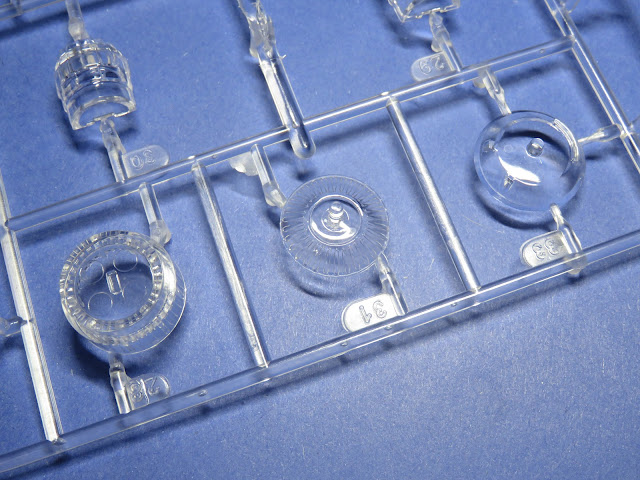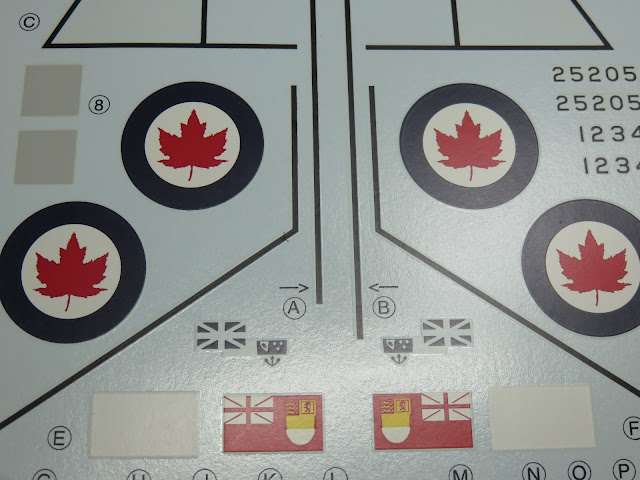I got a text from my sister, that my brother had found me an Avro Arrow...yeah right! Then she showed me the picture he sent, and lo and behold a rare 1:48 Avro Arrow.
Not a lot of people outside of Canada will be aware of this aircraft or why it's important. I won't go into too much, but this aircraft and it's engines were 100% Canadian designed and built. It was going to be the new superstar of the aviation world and guard the north. Only 5 were ever built and testing on those was limited, when the aircraft and the entire production was scrapped and all everything was destroyed. No Arrows survive, only a few parts and plans that were taken from the factory and preserved.
So this is an important kit to Canadians, as a legacy to the engineering and dedication of all Canadians. Ever since 1959 Canadians still feel wounded that these majestic aircraft never took to the skies.
Hobby Craft or Hobby Craft Canada, had a good run back in the day. They produced several 109's in 48th scale that are still sought after today. They are most notable to Canadians for producing a CF-100 Canuck and CT-114 Tutour and of course Avro Arrow (all were made in 1:72 and 1:48 scales). From what I know based on someone who knew the original owner decided to retire and the company went to his sons. For some reason production halted, the several of the kits went to Academy as reboxings, and the beloved line of Canadian aircraft were lost. Only the Arrow in 1:72nd scale made an appearance again, but as a limited run. For years the HCC website promised that the 48th scale Arrow would return to the market, with retooled recessed panel lines and improvements. But sadly last year I noticed that the website vanished.
These kits aren't anything special in the way of Tamiya or Eduard, they need some work but they do build up into nice looking models. It's just a bitter shame that they are gone and no one seems to know where the tools are. Even though they were produced in Korea, they have yet to appear on the market under a new name. These kits are rare, in the sense that most modelers know these are important and very popular to Canadians, so a 1:48th scale Arrow can cost you $150 easily. Even though the kits really not worth that much, people know that Canadians really want these kits.
Enough talk lets look at this kit.
(This kit was bought used at a thrift store and as a result the window is missing, other than that the kit is complete)
The back of the box features a full color painting and decal guide. All the version RL-201 to RL-205 are present in the kit.
The main fuselage features recessed panel lines. Previous editions of the kit were molded in white plastic. This grey styrene is thin and quite grainy. I'll need to rescribe the entire model, and sand down the plastic to smooth out the grain.
The recessed panel details are really nice but rather thin, also featured are the dive brakes, but no interior detail for them.
The first sprue features the wheels and gear covers. There are no details for the inside (though there are aftermarket parts for these) Keeping in mind this kit was first made in 1987. The long piece at the top of the sprue is the spine, which also holds the tail in place.
Here on the sides of the intakes the grainy effects of the plastic can easily be seen. These aren't impossible to clean only a bit more work to make the kit more accurate.
Some of the engine details for the rear of the aircraft.
The landing gear is very simple compared to reality. The parts are quite sturdy however I'll be replacing these with resin and more accurate parts.
The Spine in more detail, showing more of the grail and lines, I assume was from retooling the molds. These lines are all over the kit.
Oddly the nozzles are really clean and have no grain, or much details to them.
Insides of the gear doors have minimal details and a few easily removed ejector pin marks.
The next sprue section features the nose, and a few of the interior cockpit sections as well as the Arrow's giant tail.
Panel lines are nicely done, however there are a few lines that aren't as tight as they ought to be.
The cockpit and details are minimal. There is an aftermarket set for this, but I'm not going to bother, as I plan on building this kit with the canopy closed up. So this detail won't really be seen.
Here are the head rests for the ejector seats.
Again minimal details for the inside of the cockpit and forward wheel bays.
Here are the giant wings for this beast of an aircraft. I've read some people aren't pleased with the size shape and location of the blisters on the lower wing. They might be too big, but I don't find them to be an obnoxious inaccuracy.
A common feature on the aircraft and a big reason as to why I want to rescribe the model, as seen here these panel lines don't mate up with the other side.
My biggest surprise is that the decal sheet is really quite nice. My only complaint are the the Red Ensign tail flags. They are printed in 3 sections and black in was used instead of blue. I was quite impressed with all of the instrument details for the cockpit that really won't be seen.
The roundels are quite nice, but not as crisp as I'd prefer, and the blue is a tad too dark. I'd like to replace these, so far the only company I know of is Canuck Models.com. But I never saw the Arrow decals in stock and I'm very sad to report that the company closed in late 2019. They were an excellent company.
I've taken pictures of the entire instruction guide. These aren't scans of the full instructions, but they are all there. So if any modeler buys this kit and the instructions are missing just copy these pictures for your own use.
I think a few things need to be mentioned. I don't want to come off as sounding harsh on this kit. It was made in 1987, it's over 30 years old. And for the lack of a lot of details, well the internet wasn't at the same capacity it is today. There wasn't a lot of detailed information on this aircraft so it's understandable as to why details are incorrect or missing.
I'm going to invest in a lot of parts for this kit. It's going to be an expensive endevour, but one that I gladly welcome. The only real obstacle for me is to find new decals for it. I might have to source them from several kits.
And even worse still... I need to find one more Arrow. I want to build one flying and one parked on the ground. But I'm so grateful that I at least have this one. I'm going to ask around to a few people and see whatever became of these kits and possibly find out where these molds are and if they might ever return. As I know there is a market for these older Canadian models.
It's a crying shame what happened to the real Arrow, and also sad that finding a model kit of it is a difficult task as well. And because it's so hard to find I'm determined to put my all into this kit to build it as best I can. Hopefully I'll be able to purchase the parts I need for it and start on it soon.


































































































